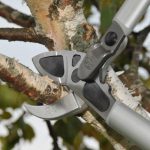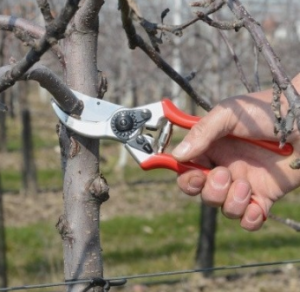We use cookies to make your experience better. To comply with the new e-Privacy directive, we need to ask for your consent to set the cookies. Learn more.
Winter Pruning
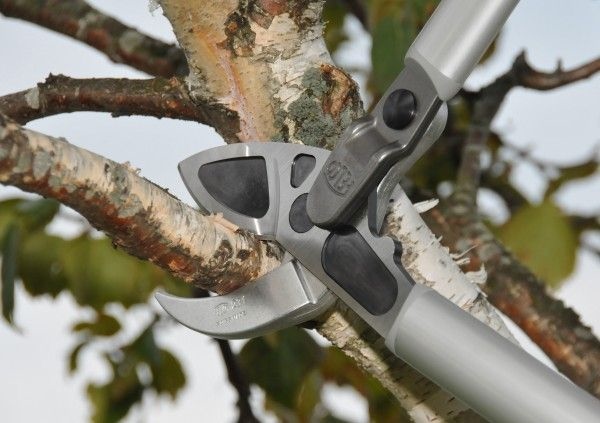
Winter is an ideal time to prune, as the lack of leaves on deciduous trees and shrubs enables you to see what you’re doing. As the trees are dormant cuts are less likely to bleed and will quickly callous over before growth begins again in Spring.
Reasons for Pruning
- Removing dead, diseased or damaged material will help keep the plant healthy
- Opening up trees by removing branches stops branches crowding together. This allows more air to circulate, which is important for reducing disease, and also allows a good level of light to reach the growing parts of the tree.
- Taking out lengths of bud-bearing stems concentrates the energy of the shrub or tree into those buds that remain, so when growth starts again in the spring it will be more vigorous.
- Pruning helps younger plants in their formative stages by establishing a good shape.
- Branches that are growing into a path/gate way can be removed as can any branches that might cause damage if they fall.
Basic Pruning Guidelines
Cut at the correct distance
Always make cuts just above a bud, but not so close that you risk damaging the bud. Don’t cut too far above it, as water can get trapped in the stub and lead to rotting. As a general rule, cut above the bud at a distance of about a quarter of the thickness of the stem.
Get the angle right
Make cuts at an angle of 45°, so that the top of the cut slants away from the bud and in the direction that the bud is pointing. This minimises surplus tissue that might rot, and helps the top of the stem to shrug off water, directing it away from the delicate bud.
Prune to an outward-facing bud
When pruning a stem, the bud nearest the top of it will be the first one to grow into a new shoot. Select cutting points carefully – prune just above a bud that points in the direction that you want the new shoot to grow, at the height you want the new shoot to start from.
Cut back weak growth
Thick, strong shoots have more natural vigour than thin ones. Even up plant growth by pruning back weak stems harder, cutting them shorter than the strong ones. Where weak shoots have grown from the base, cut them out completely for strong new growth.
Use clean, sharp equipment
Make sure the tools you use are the right ones for the job – that way you will do a better job. Keep your blades oiled and sharp and also just as important keep them clean to stop the spread of disease. Strong alcohol, such as surgical spirits, which you can pick up in the chemist, is ideal for sterilising pruners.
How Pruning Shapes a Tree or Plant
In simple terms, pruning works by playing with a process known as apical dominance. This is the tendency for the shoot or branch to grow predominantly from its tip. The bud at the tip, known as the apical bud, grows actively and lengthens the stem. It also produces additional secondary buds to the side of the stem which are left in its wake as it grows away. Leaves appear at these secondary lateral buds but the buds themselves often remain dormant. This dormancy is controlled by the hormones which the apical bud is producing as it grows. They flow back down the stem and inhibit the side buds from developing. The strength of apical dominance will vary between different species of plants.
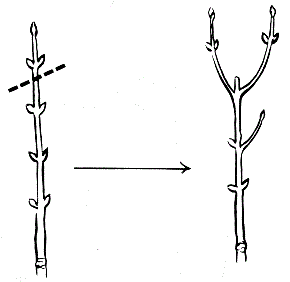
When we decapitate the stem by pruning, and remove the apical bud, the hormones are also removed and the side buds closest to the cut wake up and begin to grow. This is why pruning a plant makes it get bushier and fill out, which is useful for creating hedging and windbreaks.
As the hormone (auxin) flows downwards with the pull of gravity, the angle of the shoot or limb will have a big influence on how it moves in and affects shoot growth. For example, an upright stem will lead to the strongest apical dominance compared to a stem at 45? which will have a more balanced growth habit with the lateral shoots growing at a similar rate to the apical growth. With a horizontal limb the effect of apical dominance is lost completely and vigorous upright shoots will take off from the top side. These are known as ‘water shoots’ and often a problem in fruit trees where the branches are kept horizontal to improve fruit production and access.
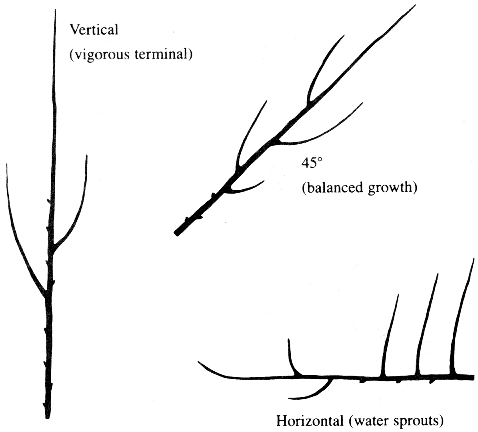
Apical dominance is probably the most fundamental and important principle to grasp when beginning pruning. However, there are of course a lot more factors which determine how a plant will react to pruning. For instance, the ratio of root to shoot mass after pruning and the particular growth habit or disease susceptibility of the species in question will have a big impact. These then have to be considered with the shape you are trying to achieve.
All these factors can amount to make pruning seem a bit daunting. Like all skills, there is no substitute for some hands on experience to get a grasp of the principles and gain some confidence. Practical pruning courses and demonstration are offered around the country and are well worthwhile so you can see real examples of the principles as you learn. Irish Seed Savers, who have been preserving Irish heritage fruit trees for years offer excellent courses.
Fruit Trees and Pruning
Pruning is a very important for fruit trees. Reasons more specific to fruit trees and bushes include:
- Controlling the height of the tree so that the fruit remains within reach.
- Preventing the spread of specific debilitating diseases.
- Developing the limb structure of the tree to create strength and allow air circulation.
- Encouraging the growth of new shoots which will bear fruit in future.
Basic Pruning Guidelines for Fruit Trees
- Shorten the previous year’s growth on each main branch (primary) by about one third to a bud facing in the required direction. This will encourage the development of new branches and spurs and maintain a good shape.
- Leave young laterals (side-shoots) unpruned so they can develop fruit buds in the second year.
- Only remove the young laterals if they are crossing or if the growth is too crowded, i.e. growing closer than 10-15cm at the base.
- Remove strong shoots (great than 15cm long) growing towards the centre of the tree.
- On older trees, remove or thin out any spur systems that have become congested. Where thinning or removal is required, remove spurs on the underside of the branches, where the developing fruit will not receive enough light, and produces inferior fruit.
- Always remove pruned fruit tree material away from the site, especially if showing signs of disease, as the material may serve to carry the disease organism over to re-infect healthy new growth.
Tools for Pruning
Which tool to use for pruning depends on the diameter of the wood to be cut. Pruning tools range upwards in size from snips, hand pruners (secateurs), loppers and saws.
- Snips – These are useful for small plants, taking cuttings and deadheading. Deadheading is the practice of removing fading or dead flowers from plants. This keeps the plant looking tidy whilst encouraging more flowers to develop.
- Hand pruners/Secateurs – these are one of the most used (and most lost) tools in the garden. Indispensible for a wide range of tasks from clearing brambles to pruning fruit trees and bushes. With pruners, there are two types to choose from: ‘Crosscut/Bypass’ pruners have blades which slide past each other like a scissors. These make sharp clean cuts and are used for pruning living tender stems. ‘Anvil’ pruners work by having a top blade which bites down into a flat base plate more like a knife on a chopping block. These are more forgiving than bypass pruners as they cut effectively even if the position of the blade moves during cutting. Less force is also required to make cuts so they are well suited to thicker material. They are usually used for cutting dry, hard or dead wood. Pruners are suitable for cuts up to 2.5cm.
- Loppers – larger two-handed versions of hand pruners specifically designed for the task of pruning thick branches that cannot be pruned comfortably with a one handed pruning shear and where a longer reach is needed. Also available with bypass or anvil blades. These are good for cuts up to 4cm.
- Saws – For cuts larger than 4cm a saw is required. They are also fine to use with smaller branches. Pruning saws usually have a large tooth pitch which makes cutting through fresh green wood easier. Small saws can be foldable which makes them safer to carry around.
- Gloves - protect yourself from thorns and accidental cuts. Remember to stay safe on ladders and not over-reach to get that tricky branch!
- Always keep your cutting tools sharp for a cleaner cut. We have small Swiss sharpeners that can fit neatly in your pocket.

